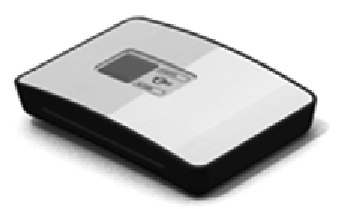Information Technology Reference
In-Depth Information
EXAMPLES FOR AAL SYSTEMS
CONSIDERING PATIENT CARE DATA
munication problems due to media breaches will
occur. Without technical standardization as well
as standardization in form and content, subopti-
mal care is inevitable (Bopp-Kistler, Hafner, &
Rüegger-Frey, 2004).
To achieve this goal, the system is based on the
IHE
Cross-Enterprise Document Sharing
profile
(XDS) (IHE International, 2010). An XDS affin-
ity domain was established to allow a group of
healthcare enterprises, mobile nursing services,
nursing homes and hospitals to work together.
They have the possibility to use a common set of
policies and share a common infrastructure, which
enables importing and exporting care-relevant data
to specific nursing care documentation systems.
The system architecture integrates the analyzed
systems and assures efficient and secure data
transfer as well as easy access of stored care sum-
maries (Franz, Lehner, Mayr, & Mayr, 2009). If
a patient is admitted to the hospital, the caretaker
in the nursing home presses a button and the sys-
tem automatically generates and stores the care
summary. The caretaker in the hospital can easily
access the stored care summary using a standard
web browser.
In conformance with the IHE
Patient Care
Coordination
profile (PCC), the care summary is
implemented as a HL7 CDA Release 2.0 document.
CDA is a widely used standard for exchanging
healthcare documents and makes documents
machine- and human-readable (Spronk, 2008).
Since the number of elderly people is steadily
growing, 24/7 patient homecare has increased
tremendously in Austria during the last few years.
Most mobile care providers in Austria still have no
IT-supported care documentation system in use,
although increased documentation is demanded
by law. Therefore, also include easy accessibil-
ity of the system was provided for mobile care
providers in the form of a system-independent
solution for mobile devices, which is accessible
via a standard web browser and a secure internet
connection.
Efficient cross-institutional exchange of patient
care data is only one aspect of ambient assisted
living. Assistive systems for elderly or care de-
pendent persons, like
iResidence
, can also provide
relevant data for mobile nursing services, nursing
homes and hospitals.
iResidence
TM
The project
iResidence
was started in 2009 by a
consortium of Spantec, the Upper Austria Univer-
sity of Applied Sciences, the University of Vienna,
and the Christian Doppler Klinik Salzburg. The
goal of the project was to build an AAL system
containing the following key features:
(i) fall
detection
by wearing a fall detection unit (see
Figure 6),
(iii)
indoor localization by using a mesh
network of wireless sensors,
(iii)
recording of
vital signs and physiological parameters (weight,
blood pressure and blood sugar),
(iv)
interoper-
ability concerning data exchange with healthcare
providers, medical and home automation devices,
and
(v)
behavior analysis for identifying activities
of daily living. Concerning interoperability, it
was required to support the integration of various
standardized (Continua Health Alliance, IHE) and
non-standardized (medical) devices, as well as
home automation technology, like motion sensors
or remote switchable power connectors.
Figure 6. iResidence
TM
fall detection unit (copy-
right Spantec)

Search WWH ::

Custom Search